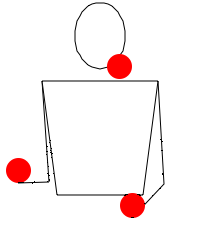
Reverse cascade
Encyclopedia

Juggling
Juggling is a skill involving moving objects for entertainment or sport. The most recognizable form of juggling is toss juggling, in which the juggler throws objects up to catch and toss up again. This may be one object or many objects, at the same time with one or many hands. Jugglers often refer...
pattern in which the props follow the same path as the cascade
Cascade (juggling)
In juggling, a cascade is the simplest pattern achievable with an odd number of props. The simplest cascade is the three-ball cascade. This is therefore the first pattern that most jugglers learn.-Three-ball cascade:...
, but with time going backwards, hence the 'reverse'.
The pattern is performed with an odd number of props. As in the cascade, props are thrown from alternating hands and each prop is caught in the opposite hand from which it was thrown. The key difference between a regular cascade and the reverse cascade (from a juggler's point of view) is that one throws each object over rather than under the others.
While in a cascade objects are caught on the outside of the pattern (on the far left and right) and thrown from closer to the middle of the pattern, causing each ball to pass under the ball previously thrown, in a reverse cascade objects are caught near the middle of the pattern and thrown from the outside, causing each ball to pass above the ball previously thrown. Thus from the juggler's perspective the left hand moves in a clockwise motion, and the right hand in a counterclockwise motion.
The reverse cascade is generally considered to be more difficult to perform than the cascade.

